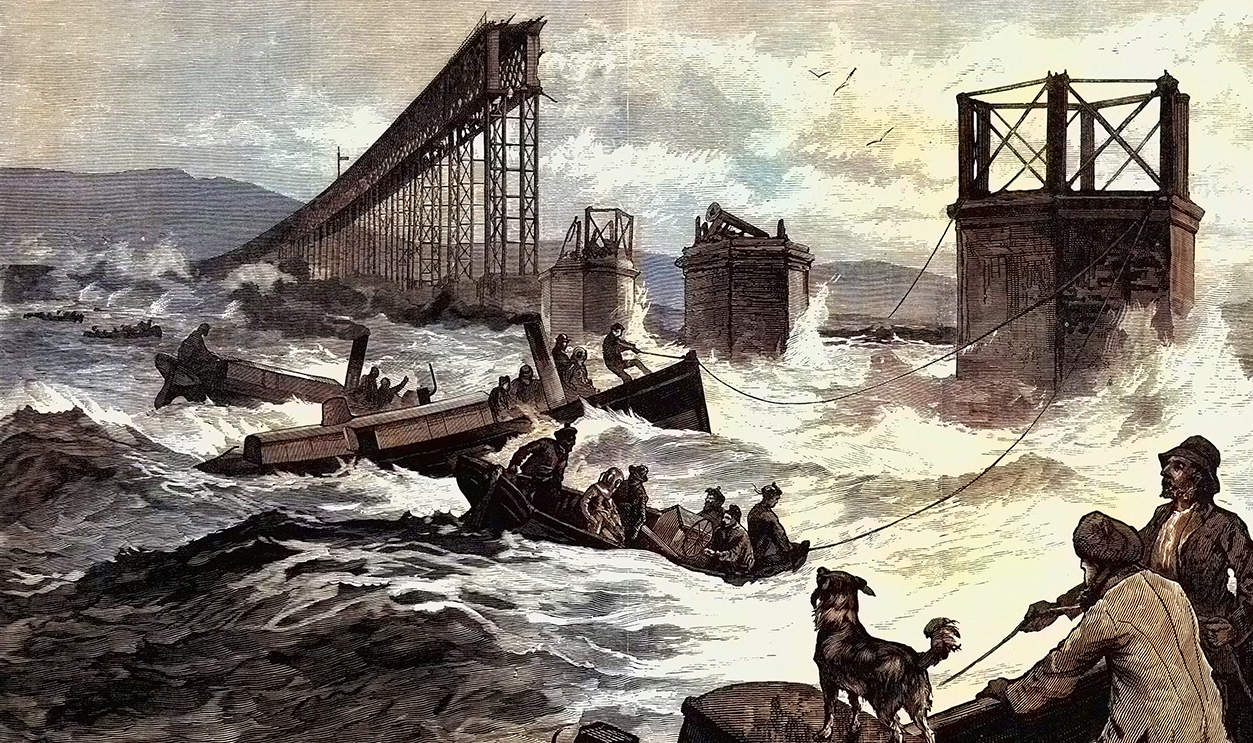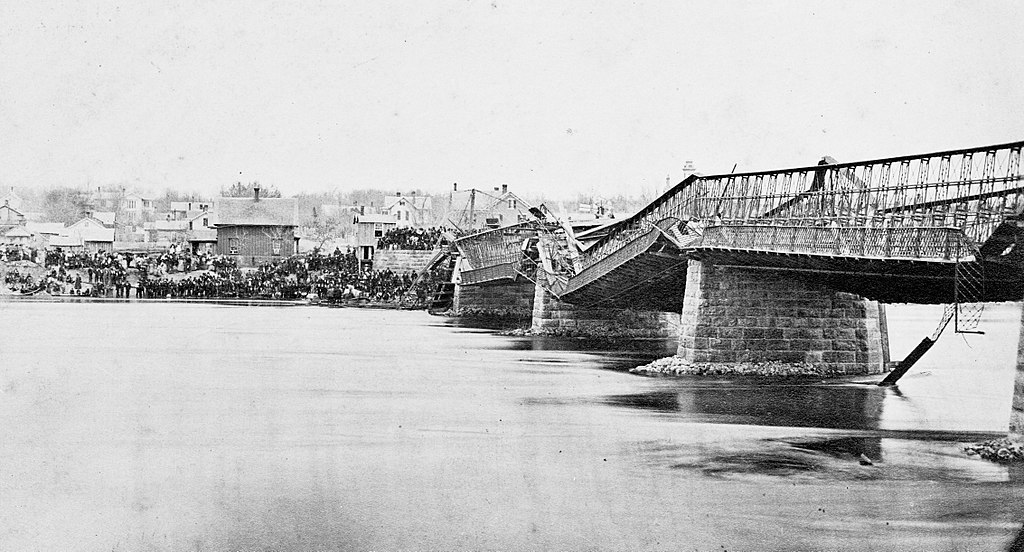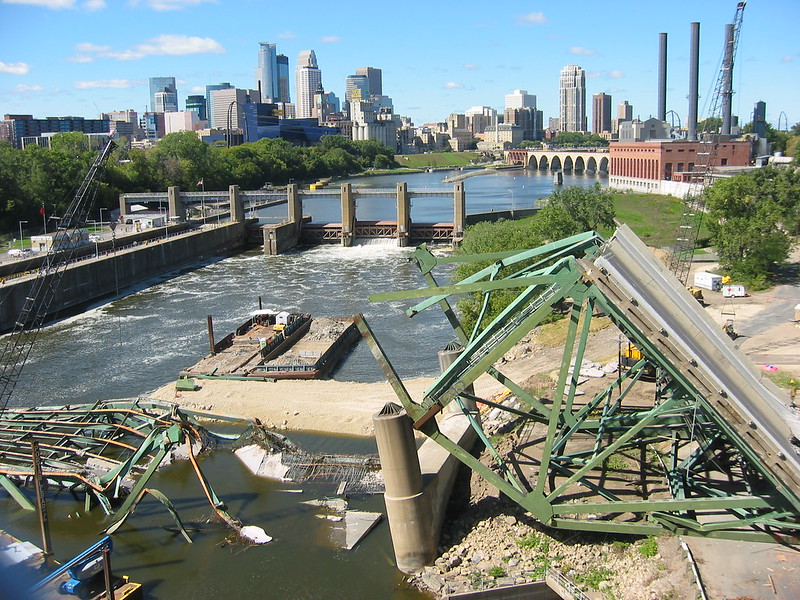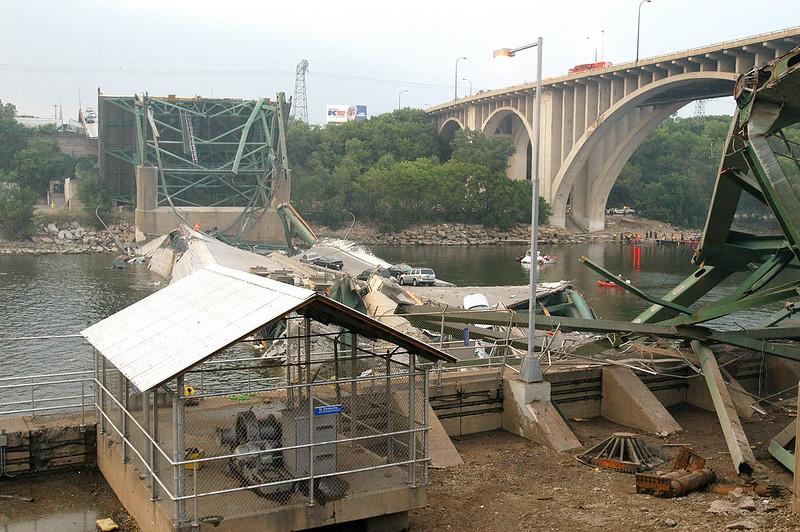Devastating Bridge Collapses
Bridges are among history’s greatest feats of engineering—but in rare cases they have unexpectedly and catastrophically failed, resulting in tragedy. From natural disasters to overwhelming crowds of people, these collapses are among history's deadliest bridge disasters. Be warned: These might just unlock a new fear.

Great Yarmouth Suspension Bridge
Location: England
Year: 1845
Fatalities: 79
The Great Yarmouth suspension bridge met its chilling fate on what was supposed to be a day of fun. On May 2, 1845, the clown Arthur Nelson ushered in the arrival of William Cooke's Circus with a promotional spectacle.
Great Yarmouth Suspension Bridge
It was advertised that the clown was going to float down the River Bure in a washtub, pulled by four geese. In response, thousands showed up. An excited audience crowded the sides of the river, as well as the suspension bridge. It would only end in horror.
 Frederick James Smyth, Wikimedia Commons
Frederick James Smyth, Wikimedia Commons
Great Yarmouth Suspension Bridge
The clown's progress down the river took a dark turn once he passed beneath the suspension bridge. That's when everyone moved from one side of the bridge to the other; they wanted to keep their eyes on the clown. The sudden change in weight distribution broke the bridge's chains.
 1845 advertisement, Wikimedia Commons
1845 advertisement, Wikimedia Commons
Great Yarmouth Suspension Bridge
There were so many children on the bridge and many were crushed as the deck collapsed into the water. The cause of this massacre could be traced to a faulty joint, which had not been welded properly. Of the 79 people who lost their lives, 59 were children.
 Evelyn Simak, Wikimedia Commons
Evelyn Simak, Wikimedia Commons
Pont de la Basse-Chaîne
Location: France
Year: 1850
Fatalities: 226
It was a stormy day in Angers, France as 500 French soldiers attempted to cross the Basse-Chaîne Bridge. It was already a perilous journey as there were high winds. The men fought to remain on their feet—but it was about to get so much worse.
 Official Photography, Wikimedia Commons
Official Photography, Wikimedia Commons
Pont de la Basse-Chaîne
The soldiers steps were well-timed and forceful, and the bridge began to sway precariously. Then the unthinkable happened: The wire cables snapped.
 Unknown Author, Wikimedia Commons
Unknown Author, Wikimedia Commons
Pont de la Basse-Chaîne
The Bass-Chaîne Bridge's cast-iron towers fell on top of the soldiers. The entire structure collapsed with the deck crashing into the river. The consequences were devastating.
 Unknown Author, Wikimedia Commons
Unknown Author, Wikimedia Commons
Pont de la Basse-Chaîne
The 11-year-old bridge's collapse could be traced to a combination of reasons: the weather conditions, the soldiers' marching, and the degraded anchors. Going forward, France was so wary of suspension bridges, it took a couple decades before they decided to build another one.
 Unknown Author, Wikimedia Commons
Unknown Author, Wikimedia Commons
Whangaehu River Rail Bridge
Location: New Zealand
Year: 1953
Fatalities: 151
During one of the most festive times of the year, New Zealand experienced a terrible tragedy. On Christmas Eve 1953, a volcanic mudslide from Mount Ruapehu compromised the Whangaehu River Rail Bridge. Only minutes later, a passenger train traveling from Wellington to Auckland began crossing it.
 Unknown Author, Wikimedia Commons
Unknown Author, Wikimedia Commons
Whangaehu River Rail Bridge
There were 285 passengers aboard the train, but the damaged bridge led to six rail carriages plummeting into the water. Thanks to the locomotive's crew quick response, the emergency brake managed to save three first-class carriages—but 151 people lost their lives.
 Archives New Zealand, CC BY-SA 2.0, Wikimedia Commons
Archives New Zealand, CC BY-SA 2.0, Wikimedia Commons
Whangaehu River Rail Bridge
At the time, Queen Elizabeth II had been touring New Zealand. Only hours after the tragedy transpired, the queen took to the airwaves to share her condolences and even met with the survivors.
 Ron2K, CC BY-SA 4.0, Wikimedia Commons
Ron2K, CC BY-SA 4.0, Wikimedia Commons
Truesdell Bridge
Location: Illinois
Year: 1873
Fatalities: 46
It cost $75,000 to construct Truesdell Bridge, which was made out of iron. Built in 1869, it was supposed to be stronger than bridges made out of wood. Wooden bridges were no match for floods. However, a "faulty design" led to an awful disaster.
 Charles Keyes, Wikimedia Commons
Charles Keyes, Wikimedia Commons
Truesdell Bridge
On May 4, 1873, there were baptisms happening in Rock River. Over 200 people stood on Truesdell Bridge to watch the rite of passage. However, the weight of the audience was too much for the bridge. When it collapsed, people found themselves trapped beneath the bridge's 15-foot truss.
 Charles Keyes, Wikimedia Commons
Charles Keyes, Wikimedia Commons
Truesdell Bridge
56 people sustained injuries while 46 people lost their lives. In the wake of the bridge disaster, the incident became known as "The Truesdell Trap."
 Charles Keyes, Wikimedia Commons
Charles Keyes, Wikimedia Commons
Morandi Bridge
Location: Italy
Year: 2018
Fatalities: 43
Since 1967, the Morandi Bridge had been a major piece of architecture in Genoa—but it met its dark fate on August 14, 2018.
Morandi Bridge
Rain had been falling quite heavily when the western part of the bridge began to collapse. Cars plummeted off of the A10 motorway. The drop was a terrifying 150 feet. The vehicles crashed into the river, railroad tracks, or streets.
Morandi Bridge
As a result, there were 16 injuries and 43 fatalities. An investigation revealed why the bridge had broken down. Apparently, cracks had formed in the concrete. This meant water got inside, compromising the steel cables.
In 2020, a new bridge opened to replace the doomed Morandi Bridge.
Sunshine Skyway Bridge
Location: Florida
Year: 1980
Fatalities: 35
On May 9, 1980, the Sunshine Skyway Bridge became consumed by a raging storm. Unfortunately, the freighter MV Summit Venture—weighing 20 tons—had a difficult time battling the severe weather conditions. But that wasn't all.
 Apelbaum, CC BY-SA 3.0, Wikimedia Commons
Apelbaum, CC BY-SA 3.0, Wikimedia Commons
Sunshine Skyway Bridge
The freighter's radar wasn't working and moving through the shipping channel became increasingly difficult. As a result, it crashed into the bridge's support columns.
 Apelbaum, CC BY-SA 3.0, Wikimedia Commons
Apelbaum, CC BY-SA 3.0, Wikimedia Commons
Sunshine Skyway Bridge
A section of the bridge, spanning 1,200 feet, collapsed into the channel—taking six cars, a Greyhound bus, and a truck with it.
 Apelbaum, CC BY-SA 3.0, Wikimedia Commons
Apelbaum, CC BY-SA 3.0, Wikimedia Commons
Sunshine Skyway Bridge
35 people lost their lives, however, there was one miraculous survival story. After falling 150 feet in his pickup truck and crashing off of the freighter, a man pulled through—and managed to swim back to shore.
 Robert Neff, CC BY 2.0, Wikimedia Commons
Robert Neff, CC BY 2.0, Wikimedia Commons
I-35W Mississippi River Bridge
Location: Minnesota
Year: 2007
Fatalities: 13
On August 1, 2007, the evening rush-hour turned into a real-life horror story. The I-35W Mississippi River Bridge had eight lanes and steel truss arches—but chaos ensued when the central span collapsed.
I-35W Mississippi River Bridge
Facing a drop of 115 feet, 18 construction workers and 111 vehicles plummeted toward the water and shoreline. There were 145 injuries, and sadly, 13 people didn't survive.
I-35W Mississippi River Bridge
An investigation into the accident revealed the unfortunate truth. The metal gusset plates were not thick enough. The combined weight of the vehicles, the construction equipment, and the span was too much for the bridge to handle.
 Mike Wills, CC BY-SA 2.0, Wikimedia Commons
Mike Wills, CC BY-SA 2.0, Wikimedia Commons
Ponte das Barcas
Location: Portugal
Year: 1809
Fatalities: ~4,000
During the Peninsular War, a horrific bridge disaster occurred in Porto as Napoleon's forces closed in. On March 29, 1809, the French imperial army came at Porto's civilians with bayonets. Thousands tried to escape across a pontoon bridge—the Ponte das Barcas—but sadly, a nightmare ensued.
 Henri L'Evêque, Public domain, via Wikimedia Commons
Henri L'Evêque, Public domain, via Wikimedia Commons
Ponte das Barcas
Tragically, there were too many people on the bridges. The sheer weight of all those panicked people took down the bridge. Its collapse led to the deaths of around 4,000 people—both Portuguese and French—who perished in the Douro River.
 António Amen, CC BY-SA 3.0, Wikimedia Commons
António Amen, CC BY-SA 3.0, Wikimedia Commons













